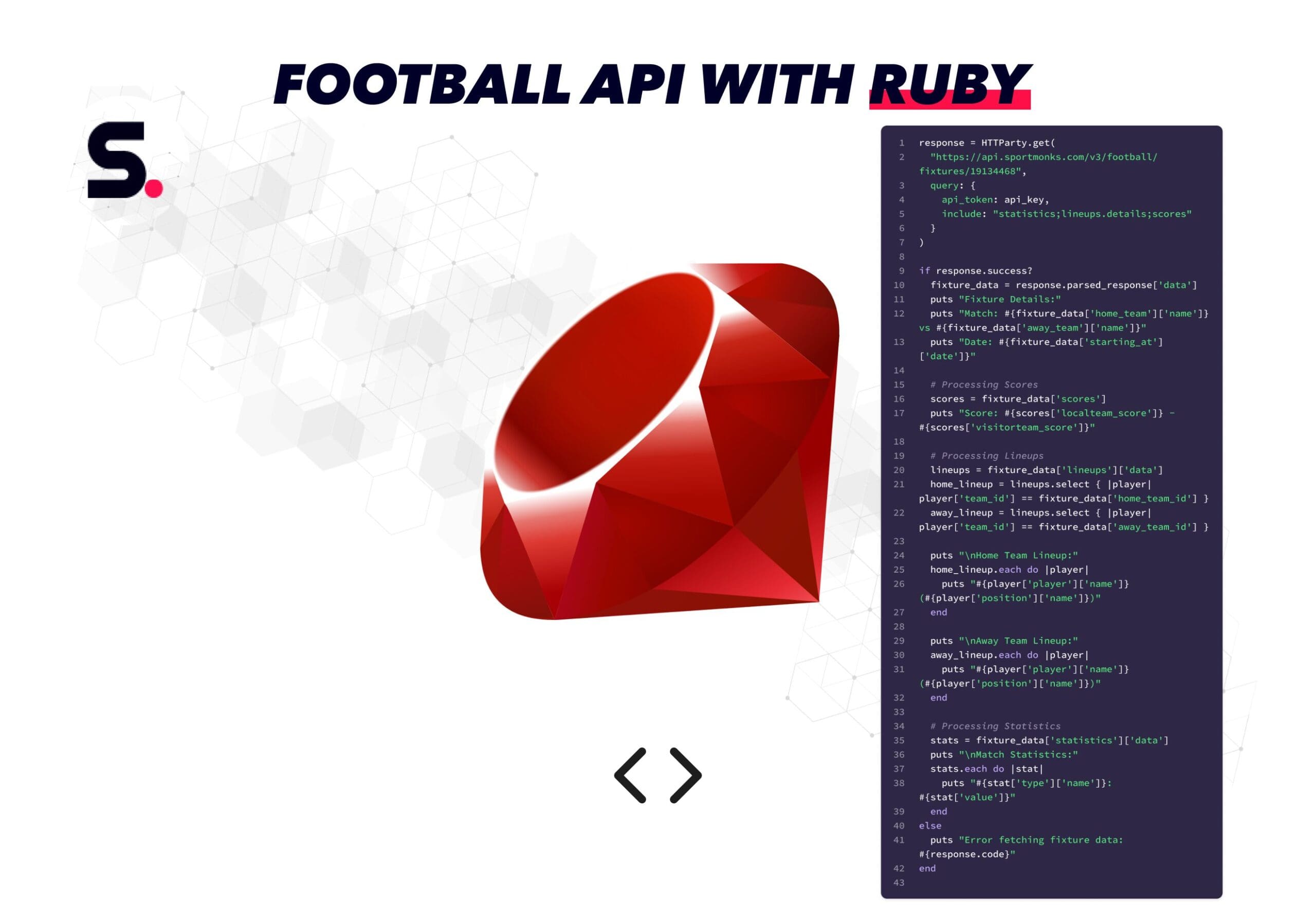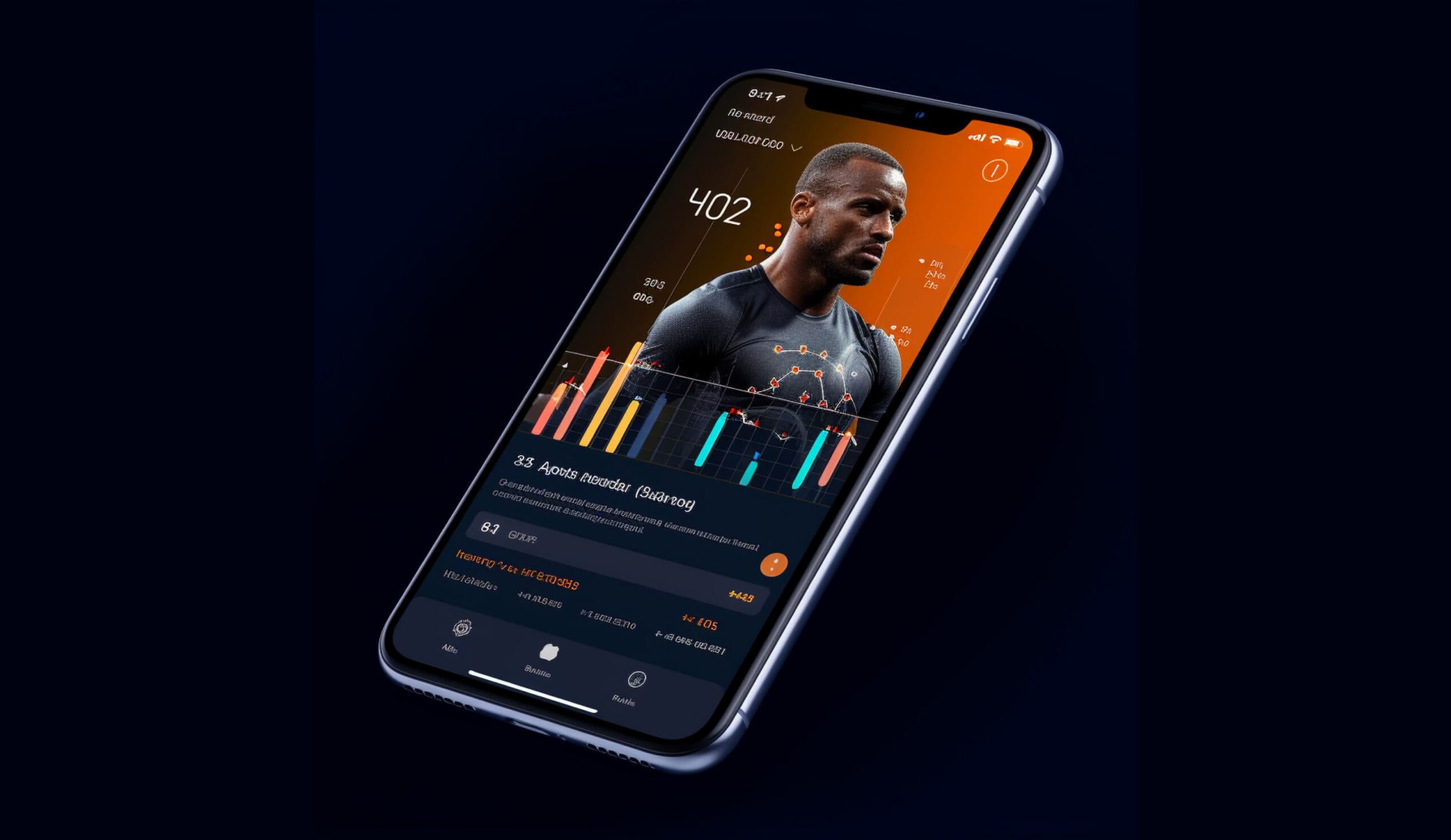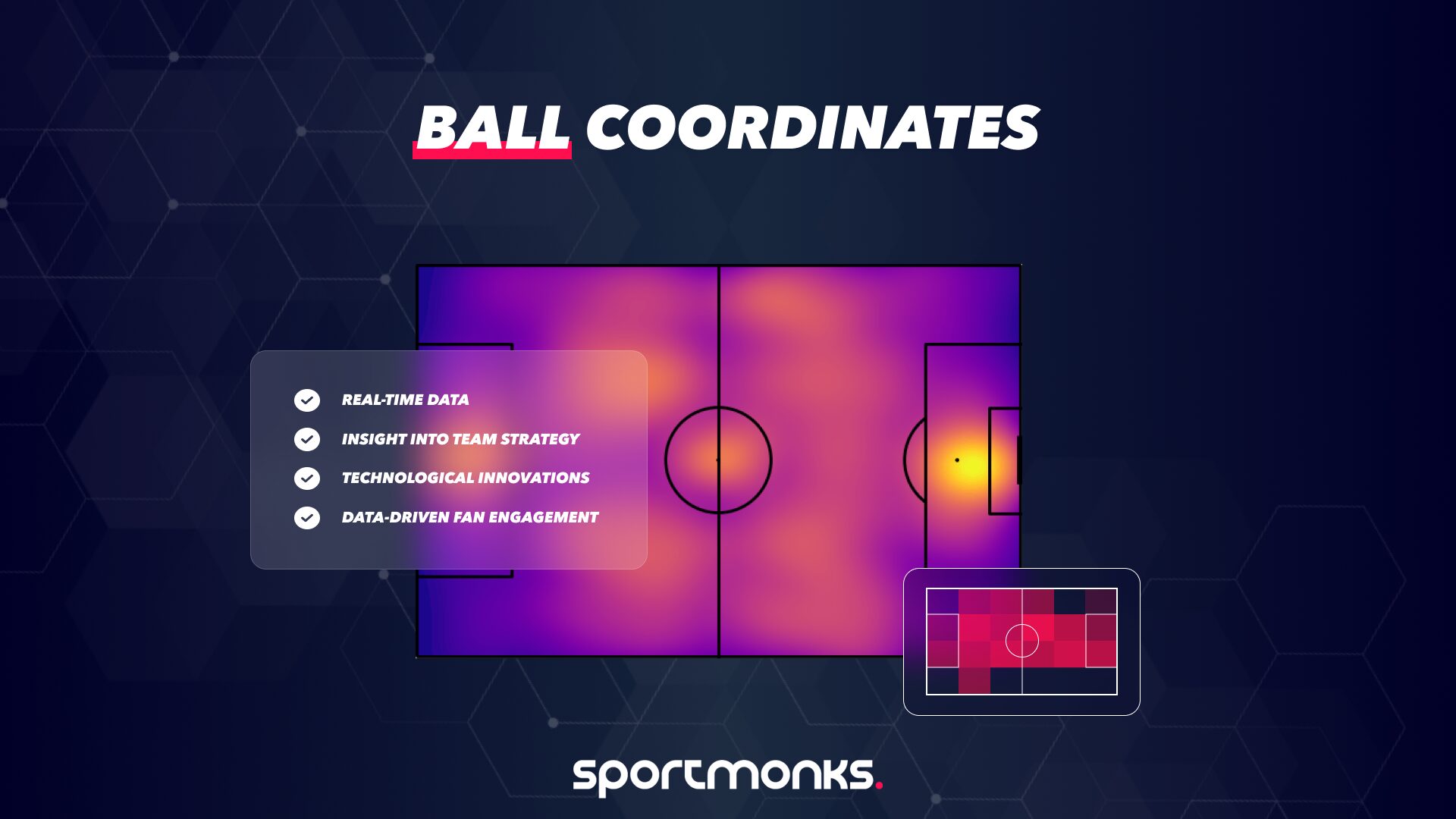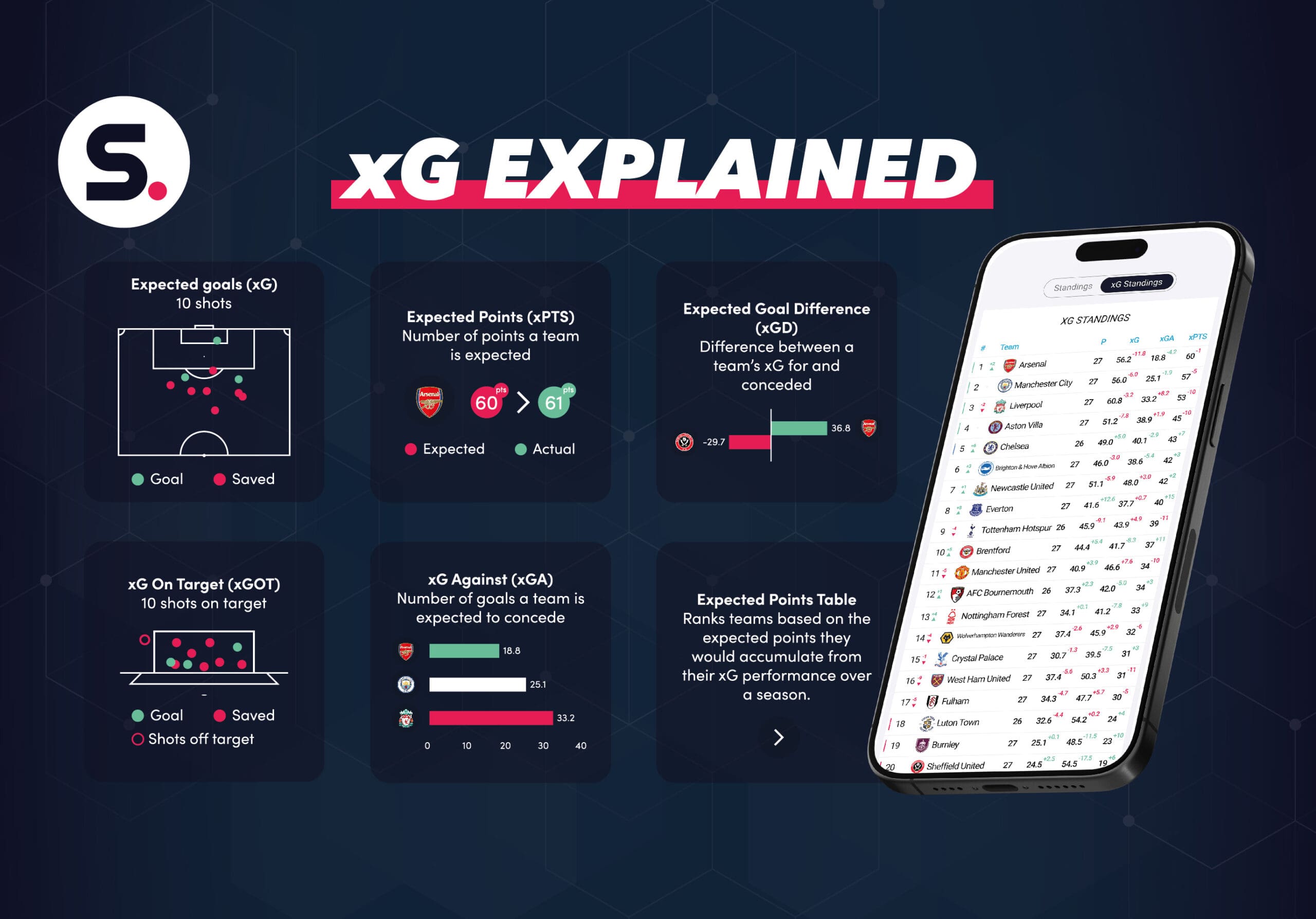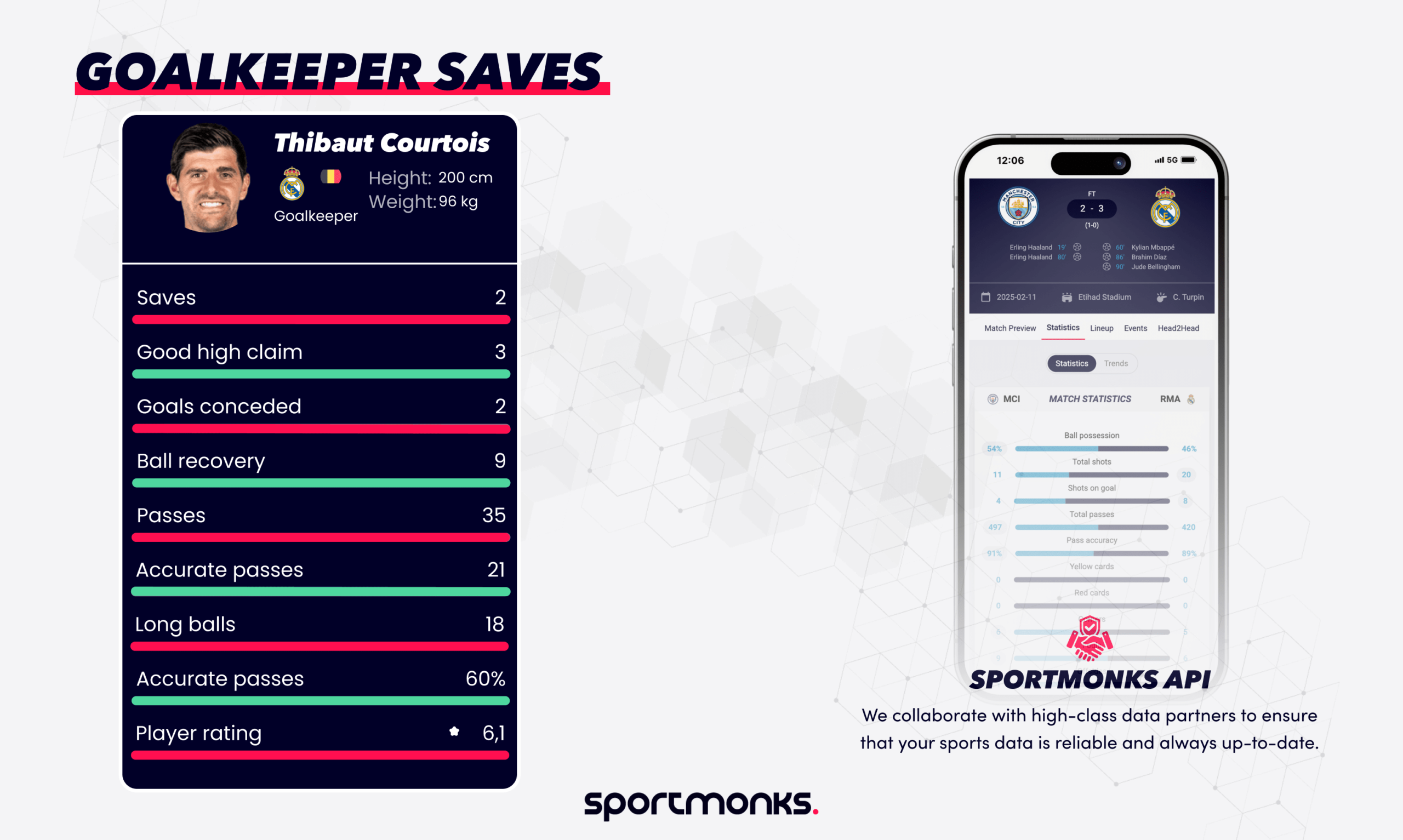
Contents
Analysts can benefit from deep insights beyond traditional metrics, leveraging how data like saves inside the box, penalties saved and punches provided by our Football API can alter the predicted outcome of a game. Goalkeepers themselves harness Sportmonks’ insights to refine their techniques, enhance decision-making under pressure, and track their progress over time. Teams integrate these precise data points into their defensive systems, optimising coordination and building robust strategies to prevent goals, knowing the man between the sticks can significantly impact the game’s outcome by influencing the match’s dynamism. While goal-scoring statistics frequently dominate the discussions, the importance of a fine shot-stopper cannot be underestimated. In the world of football, they can single-handedly determine the outcome of the game. Join us in this blog as we explore how Sportmonks goalkeeper statistics can make or mar a game.
What are the objections?
A strong shot-stopper can turn potential defeats into draws and would-be draws into victories. While a goalkeeper with superior shot-stopping qualities can be the difference between a victory or an outright loss, one on the opposing end of the spectrum can throw the game away with costly errors. Goalkeeper statistics matter because they provide measurable insights into a keeper’s performance, strengths, and weaknesses. These metrics can determine how a coach will set up his team, choosing whether to play out from the back or adopt another kind of strategy.
Coaches might argue that while we offer exceptional data, some goalkeeping contributions, such as forming defensive walls, rallying the side, and boosting team morale based on confidence in goalkeeping abilities, are too instinctive to be fully captured by analytics. Teams may fear that an overemphasis on goalkeeper statistics could paint a misleading picture. Fans, on the other hand, might find the advanced metrics daunting, particularly if the data isn’t visualised in an accessible and engaging way. Clubs could also worry that adopting analytics requires substantial investment in new tools and training, which may be challenging for smaller organisations depending on the size. Acknowledging these concerns is essential to creating solutions that work for a large number of users.
The Frustrations of Adopting Modern Goalkeeper Statistics
Many stakeholders in the football world are increasingly turning to far-reaching data and performance insights to overcome the frustrations and challenges posed by traditional analysis methods. However, adopting modern goalkeeping statistics for clear decision-making requires a balanced approach. This is so because data points may need to be analysed in relation to one another to provide a complete picture. A major pain point is the effort required to use manual data tracking methods, as they require a tremendous amount of effort to collect, store and update.
These systems are not only costly to maintain but are also prone to human error and inconsistencies that can undermine accuracy. Sportmonks’ Football API effectively solves a lot of these pain points by providing instant access to crucial live goalkeeper statistics, allowing coaches to make informed decisions quickly and accurately. As we shall see much later, numbers alone are not enough! While having that in mind, the ability to present complex goalkeeper statistics using visualisations and streamlined dashboards cannot be underestimated.
What are the fears of relying on goalkeeping statistics?
Data-driven insights offer groundbreaking tools for analysing goalkeeping performance, but some concerns do remain among stakeholders. Unforeseen factors such as weather conditions, defensive errors, defensive pressure, loss of concentration, deflections, or tactical adjustments are not fully accounted for. Hence, sole dependence on statistics could leave goalkeepers unfairly judged, especially when a team’s defensive setup leaves them vulnerable to facing high-quality goal-bound shots. Fans may also express concern that advanced statistics could make the game feel overly technical, diminishing the emotional aspect of the game. By acknowledging these concerns and providing clear, accurate, and contextualised insights, Sportmonks’ data-driven approach aims to complement, rather than replace, traditional analysis.
What are the common assumptions?
Many mistakenly assume that Sportmonks’ goalkeeper metrics are overly complex. However, our approach is specifically designed to simplify these insights, making them practical and accessible for real-world application. While many expect our advanced goalkeeper statistics to be only relevant in elite leagues, the ability to track and analyse performance across all levels of competition remains a core advantage of our statistics API.
Additionally, there’s a common misconception that adopting Sportmonks’ data solutions requires significant technical expertise. However, this is not entirely true. While a certain level of know-how is encouraged, our comprehensive documentation and incredible number of guides can allow stakeholders to harness the power of our Football API with minimal effort.
Unlocking the impact of the goalkeeper’s statistics through Sportmonks data
A strong shot-stopper can turn potential defeats into draws and would-be draws into victories. While a goalkeeper with superior game-changing qualities can be the difference between a victory or an outright loss, one on the opposing end of the spectrum can throw the game away with costly errors. Goalkeeper statistics matter because they provide measurable insights into a keeper’s performance, strengths, and weaknesses. These metrics can determine how a coach will set up his team, choosing whether to play out from the back or adopt another kind of strategy.
Why do traditional goalkeeper metrics fall short?
Among several statistics for goalkeepers, shot-stopping stats are one of the most important metrics in evaluating a goalkeeper’s ability to prevent goals. However, traditional goalkeeper metrics such as clean sheets and save percentages always fail to account for shot difficulty or broader concerns such as defensive shortcomings or superiority. Sportmonks’ advanced metrics go beyond just counting saves but offer a deeper understanding of a goalkeeper’s impact on a team’s defensive performance. In the inaugural round of the UCL league phase playoffs stage, where AC Milan faced Feyenoord and lost 0-1, Mike Maignan, who was well-positioned, was expected to make a routine save considering his quality.
However, a howler from the French national goalkeeper saw the relatively weak shot aimed at the bottom corner from the edge of the box end up in the net. While he was not expected to concede, using Post-Shot Expected Goals (PSxG), we can easily judge his performance for the said match. PSxG focuses on what happens after the shot is taken, considering factors like shot placement, power, trajectory, and goalkeeper position. Why is PSxG Important for Goalkeepers? It provides an accurate measure of a goalkeeper’s shot-stopping ability. A goalkeeper facing low-quality shots (weak or poorly placed) might have a high save percentage but not actually be making difficult saves. PSxG can help us separate goalkeepers making routine saves from difficult ones. If a goalkeeper has a higher PSxG than actual goals conceded, it means they are saving more than expected, making them a strong shot-stopper.
On the other hand, if the goalkeeper has a lower PSxG than goals conceded, it suggests they underperformed for the game in question. Going back to Milan’s first-leg UCL league phase playoff encounter with Feyenoord. Mike Maignan had a PSxG value of 0.4, having conceded 1 goal; it tells us that the Milan goalkeeper underperformed. Combining that result with data from Sportmonks’ Prediction API, which had given a combined total of 53.48% that the game would not end in an outright victory for the home side, Feyenoord, you can clearly see how his error altered the outcome of the match.
Taking a look at another example on sweeper-keeper roles which adds another layer to traditional goalkeeper stats. They emphasise a combination of ball-playing ability and defensive contributions outside the penalty area. These can include defensive actions outside the penalty area, such as clearances, tackles, or interceptions outside the box. A sub-metric of sweeper stats is the average distance of defensive action. This is a measure of how far from goal the keeper makes defensive plays. The number of times the keeper clears the ball under pressure also adds to this key metric, alongside how often the keeper cuts out passes before they reach the opposition. No better example comes to mind than Bayern’s Manuel Neuer, who is critically acclaimed for his sweeper-keeper abilities. In the current Bundesliga season (2024/25), the 38-year-old performs 2.08 defensive actions outside his box every 90 minutes.
Here’s the interesting part. How far away do these defensive actions occur? These come as far away as 20.6 yards outside his goal area. To place this into better perspective, according to FIFA’s football standards, a pitch is 115 yards, divided equally; half a pitch is 57 yards. Adding 20.6 yards out of his goal area leaves him 38.6 yards outside the goal post and 18.4 yards shy of the halfway line. Impressive for a goalkeeper! Those numbers leave him in the 99th percentile for average distance of defensive actions performed among goalkeepers. And what do keepers like Manuel Neuer show for it? More clean sheets, as it denies an opponent a clear-cut chance, which could have led to a goal. We will expand further on clean sheets in the next section.
What goalkeeper metrics are available in Sportmonks’ data?
Sportmonks offers a boatload of player statistics, including goalkeeper-related stats. Let’s take a look at a few of them.
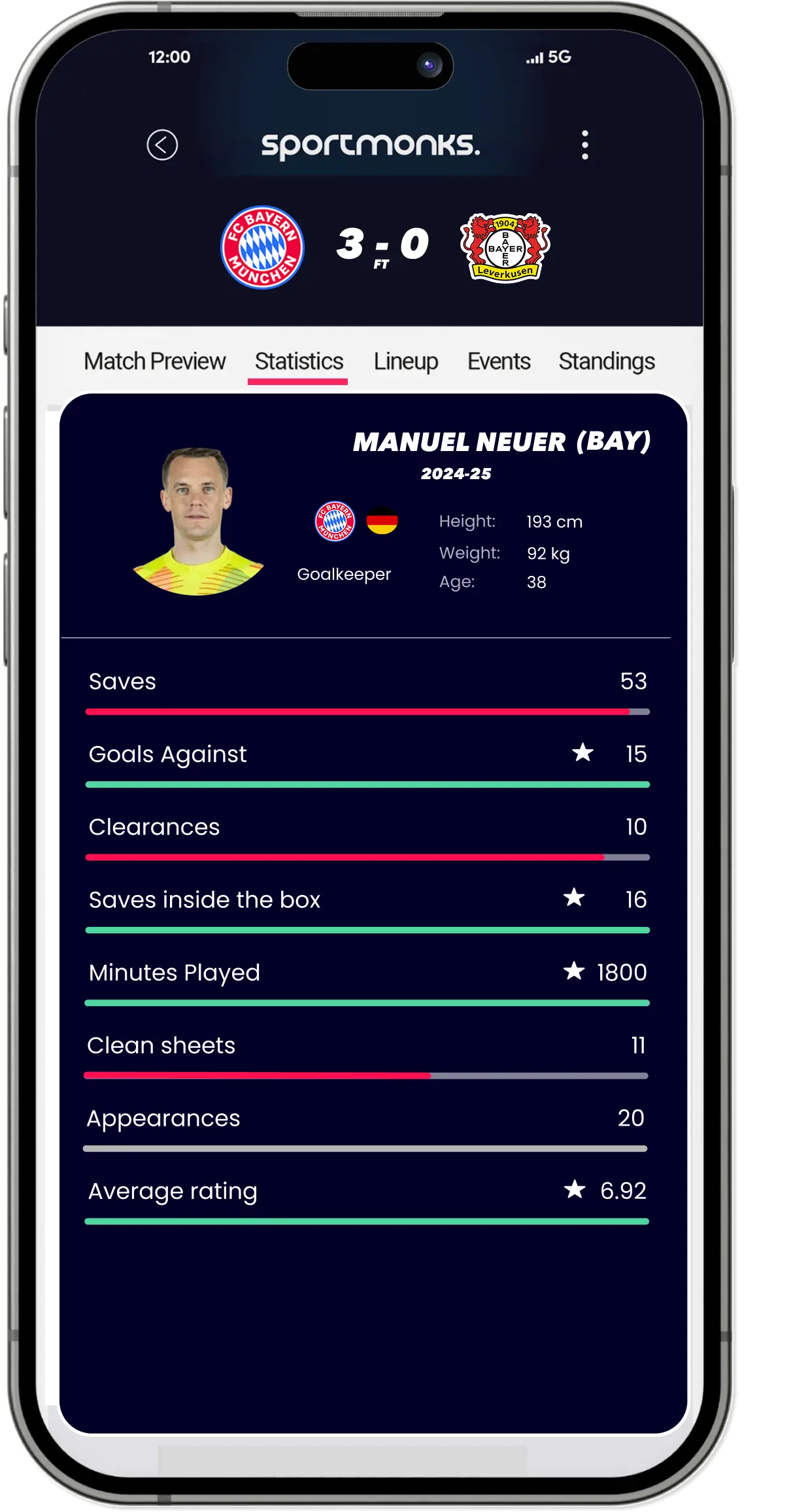
Saves (ID:57)
Saves are a prominent feature of goalkeeper statistics offered by Sportmonks. Over the course of a season, this data tracks how many times a goalkeeper intervenes with a goal-bound effort either by retrieving the ball or by redirecting the effort off the face of goal. Like we explored earlier, a goalkeeper’s ability to come up with important saves can alter the outcome of the entire game. They form the basis of goalkeeping and are a must-have if creating data profiles for goalkeepers.
PUNCHES (ID:103)
Punches differ from saves as they are usually off the face of goal. A goalkeeper can be said to have good control over his area by consistently making punches to steer the ball away from imminent danger when retrieving it is not possible. Punches come in handy in set pieces such as corner kicks or free kicks. This piece of data can be retrieved from our football API using the ID number 103.
SAVES INSIDE THE BOX (ID:104)
This indicates the number of saves inside the penalty box by a goalkeeper. Preventing the ball from going in, off an effort inside the penalty box, can be decisive, especially when considering the proximity of the shot. It takes incredibly sharp reflexes to produce a save from six yards when compared to an effort from 12 yards, although both count as saves inside the box. Saves inside the box can be retrieved from Sportmonks’ Football API using the ID number 104.
Penalties Saved (ID:113)
This measures a goalkeeper’s effectiveness at stopping penalty kicks. Saving penalties requires sharp reflexes, anticipation, and mental fortitude. A goalkeeper with a high penalty save percentage can alter the outcome of the game dramatically in a domestic fixture. Let’s take on a practical example using our Prediction API once again. In a recent fixture between Manchester City and Everton on Matchweek 18, December 26 in the 2024/25 Premier League season, our innovative prediction model gave the Sky Blues a 72.23% chance of a win. Everton, who were the visiting side, were given only an 8.38% chance of a victory, while the chances of a draw were 17.36%. The game ended in a 1-1 draw, which came down to a single decisive moment where Jordan Pickford, who was in goal for Everton, saved Erling Haaland’s 53rd-minute penalty kick. Clearly, his penalty-saving abilities came in handy for Everton by handing the Toffees a draw.
How do coaches use Sportmonks goalkeeper data for tactical planning?
In modern football, data analytics has become the bread and butter for coaches and sports analysts looking to enhance team performance. Take, for example, by examining shot patterns, coaches can prepare goalkeepers for scenarios like frequent long-range shots or attacks from specific flanks. Coaches can apply Sportmonk’s goalkeeper data for set-piece analysis. With data like ‘punches,’ understanding a goalkeeper’s performance during set pieces such as corners or free kicks can help coaches to enhance defensive positioning and minimise the risks of conceding from deadball situations.
Beyond match tactics, coaches can harness Sportmonks data to develop specialised training programmes. Targeted drills can be designed for a goalkeeper’s improvement based on analysing metrics like reflex saves, penalty-saving techniques, and rebound control.
Leveraging Sportmonks Real-Time Goalkeeper Data
Leveraging Sportmonks’ real-time Goalkeeper data can help coaches make informed and timely in-game decisions to enhance defensive setups and maintain performance levels during a match. Live updates on save percentages from open play, shot zones, and rebound control can help in making decisions based on how well a goalkeeper is handling specific shots during the game. In addition, live heatmaps can offer instant insight into a goalkeeper’s positional efficiency, allowing coaches to identify areas of vulnerability and make much-needed tactical adjustments to keep their side in the game.
Leveraging data to refine goalkeeping strategies
For example, xSaves (expected saves) are crucial for assessing performance relative to shot difficulty, as they help us understand if a goalkeeper is consistently outperforming expectations. Metrics such as pass completion rates, launch success percentages, and preferred distribution zones can help goalkeeper trainers, coaches, and analysts design tailored training programmes to enhance accuracy when playing out from the back.
Scouting the best goalkeepers with Sportmonks data
Sportmonks provides powerful tools for clubs to scout top-tier goalkeepers by analysing key performance metrics. These metrics help clubs identify exceptional goalkeepers who otherwise might have gone under the radar. Using historical data offered by Sportmonks Football API, clubs can assess consistency and adaptability under various match conditions. Sportmonks also helps clubs identify undervalued talent by comparing individual performance trends against league averages or peer benchmarks. For example, a goalkeeper excelling in shot-stopping despite limited exposure to high-profile matches may be a hidden gem worth recruiting.
Enhancing defensive organisation with goalkeeper insights from Sportmonks
Sportmonks provides valuable goalkeeper analytics to help teams optimise defensive organisation by aligning tactics with goalkeeper strengths. For example, if a goalkeeper falls into the upper percentile in claiming crosses, defenders can position themselves more aggressively to minimise the risks of conceding goals. Conversely, low aerial duel efficiency requires better defensive coverage to minimise risk. Sportmonks’ insights empower coaches to make data-driven adjustments during the game in a bid to improve defensive strategies.
Start transforming goalkeeper analytics with Sportmonks data
Evaluating a goalkeeper’s statistics requires a balanced approach. Often, a combination of clean sheets, PSxG, save percentage, goals against and expected goals against, coupled with a few others mentioned in this blog, can provide a clearer picture of a goalkeeper’s performance. Sportmonks empowers coaches, teams, and fans with comprehensive goalkeeper data, offering a competitive edge through real-time insights and advanced post-match analytics.
Whether you’re preparing for upcoming matches, scouting new talent, or refining tactical strategies, Sportmonks delivers reliable, actionable data that translates into smarter decision-making. Our impressive coverage, comprehensive documentation and user-friendly platform can simplify the process, making elite analytics accessible to everyone. Ready to transform your approach to goalkeeper analytics? Explore the Sportmonks API, sign up for a free trial and access to advanced stats like pressure index and premium odds, or dive into case studies showcasing the platform’s impact.
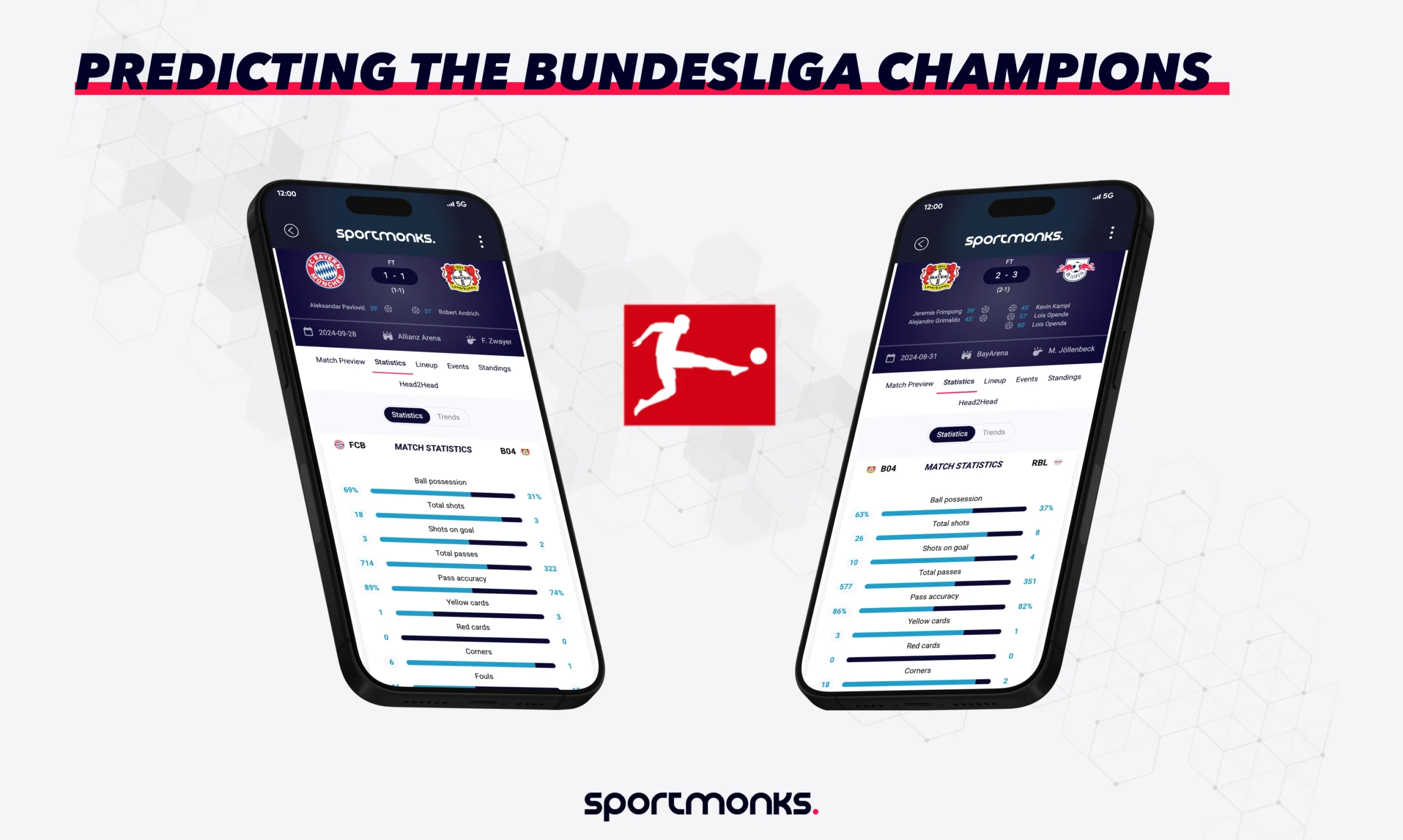
Bundesliga Predictions: Who is the favourite to become Bundesliga champions based on sportmonks data?

Enhancing Fan Engagement: A Guide for Football App and Website Owners
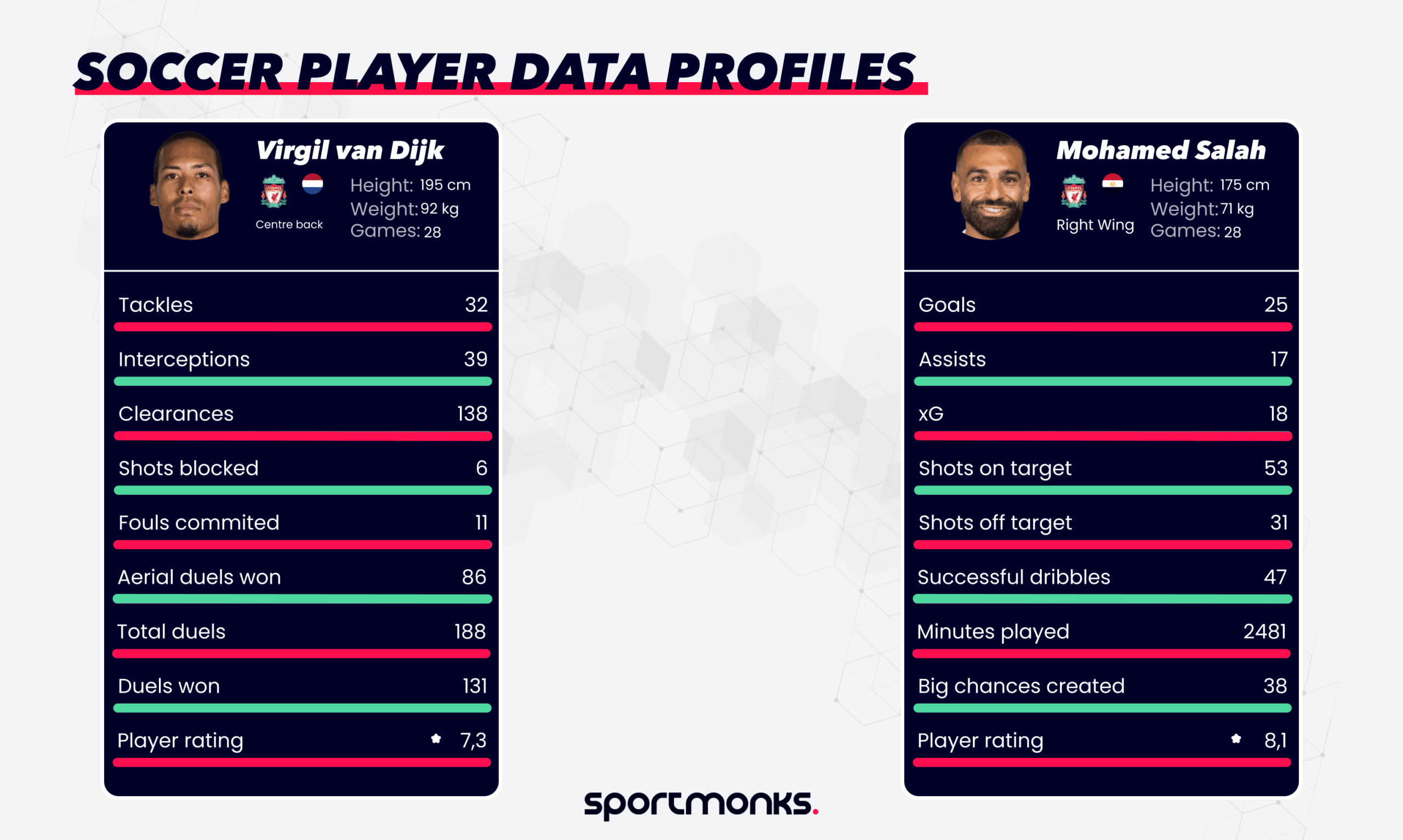
How to Build soccer player data profiles using Sportmonks Football API
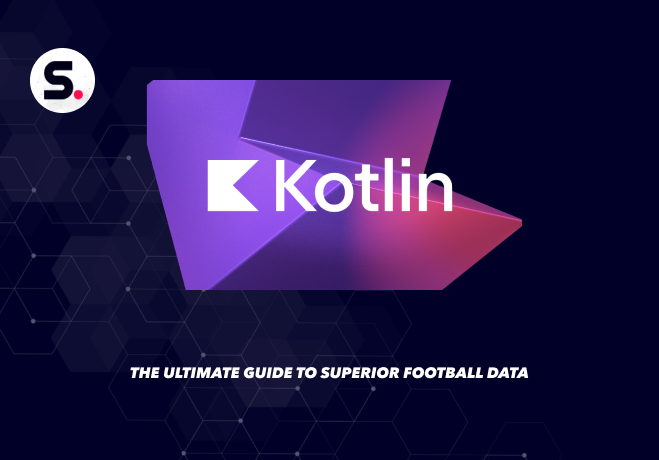
A Developer’s Guide: Leveraging Sportmonks Football API in Kotlin
